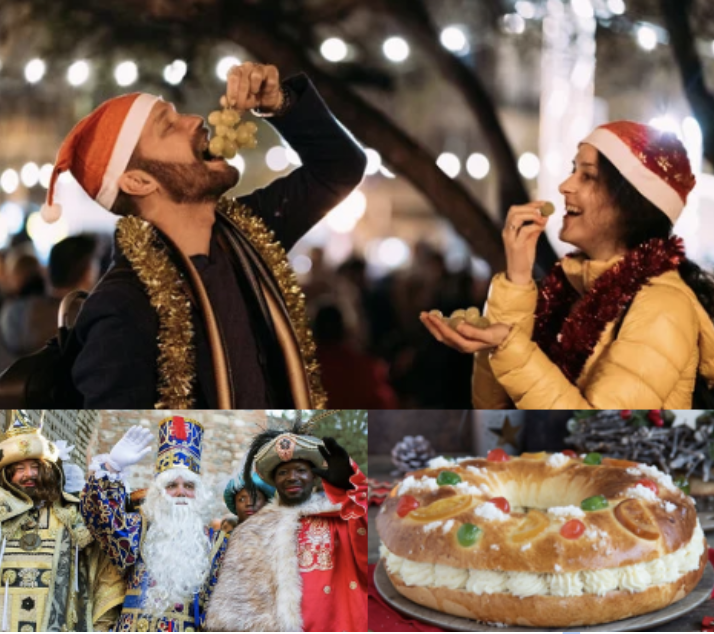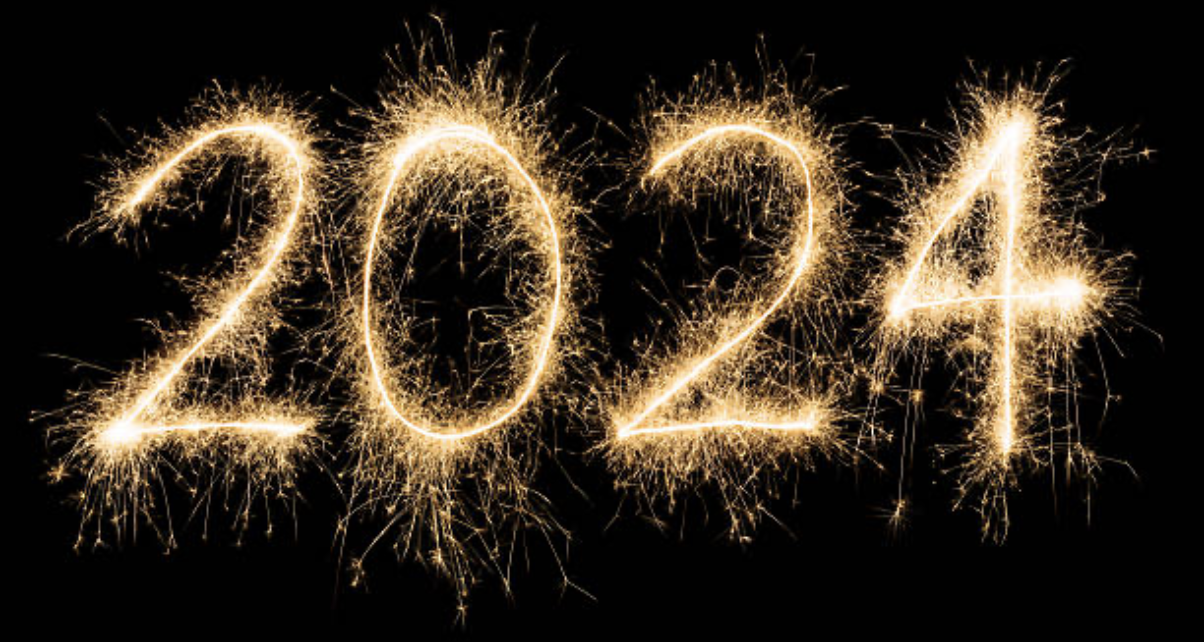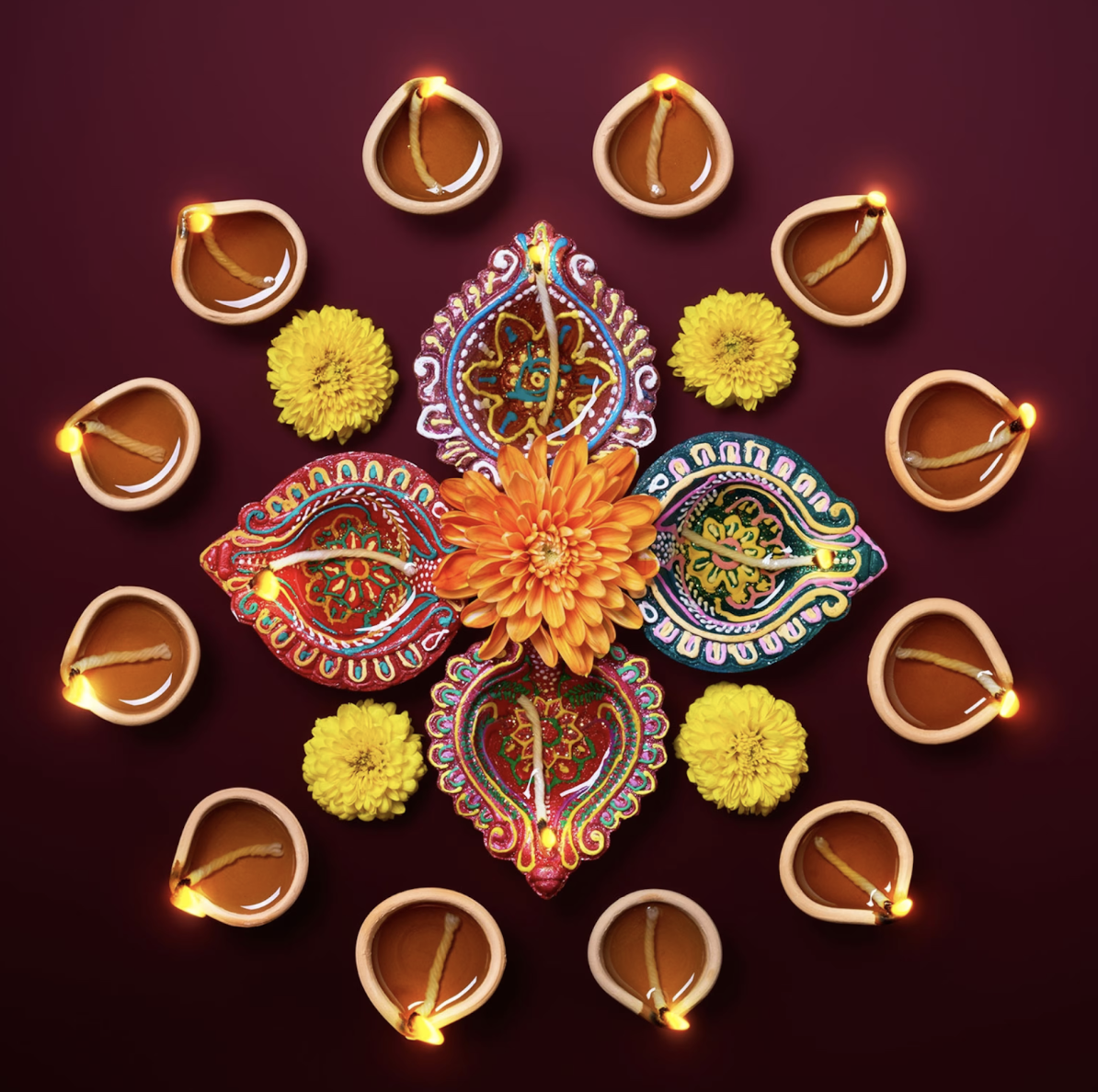By Claire Hines, Year 12
The lights in the square light up the outside of the church, and the cold night air makes the crowd shiver. They are all gathered around the church, waiting expectantly for the bell to strike midnight, signalling the end of the old year, and the beginning of the new. With Santa hats and festive clothing, they chatter excitedly, each clutching a container with twelve seedless grapes. One minute to go, the excitement mounts, and everyone gets their grapes ready. The sound of the bell sends them all in a frenzy as everyone attempts to eat a grape at each of the twelve chimes of the bell to varying degrees of success. Laughter and the sweet taste of fruit welcomes the New Year into Spain.
The twelve grapes or “las doce uvas de la suerte” each represent joy and prosperity for each month of the New Year. Families that didn’t make it to the church square, sit in front of the television where the countdown is displayed all throughout Spain, and honour the tradition at home. The custom was started in the early twentieth century by grape farmers in Alicante who promoted the practice to make a profit out of their abundant grape harvest. Since then, the tradition has spread across Spain and Latin America.
Many other surprising superstitions and practices are common during the Spanish New Year such as the wearing of yellow underwear for good luck or red for the promise of romance in the upcoming year. Standing on one foot, or holding money when the bell chimes are also believed to bring luck and prosperity, as is drinking champagne with a gold ring at the bottom of the glass. Throwing water out the window and cleaning your house thoroughly to celebrate the coming of a new year and the end of the old are also fairly popular, as is walking around with a suitcase for luck for your travels in the upcoming year.
In Chile, eating lentils at midnight or the midday meal is supposed to bring good fortune on the family, and in the Ecuador, muñecos, or dummies sometimes made up to look like unpopular political leaders and celebrities, are burnt to celebrate the death of the old year and to bury the past.
The Spanish new year is also a great time to spend with your family and enjoy festive meals and games together, but the holidays are not over yet In Spain. On the 6th of January, the Spanish celebrate “el día de los Reyes Magos” or the day of the wisemen, also known as Epifanía (Epiphany).
The evening before, a grandiose parade called the Cabalgata de los Reyes Magos makes its way through town, followed by children and adults alike, dressed up for the occasion. At the centre of the parade is the carriage with the three wisemen in it, throwing toys and candy to the children. After the parade, the children go home, leaving out a drink and a treat for the wisemen, and sometimes also water for their camels, before going to bed, in eager expectation of the next day.
The three wisemen are the three kings from the Orient who followed a star in the sky to Bethlehem, where Jesus has just been born. “And when they had come into the house, they saw the young Child with Mary His mother, and fell down and worshipped Him. And when they had opened their treasures, they presented gifts to Him: gold, frankincense, and myrrh.” Gold for royalty as Jesus is the King of Kings and Prince of Peace, frankincense used at the Temple as Jesus is the great High Priest, and myrrh, a gift for suffering as Jesus is the sacrificial Lamb of God who would later die for the world on the cross.
To honour this story, the following day, the children receive presents, much as some children receive gifts on Christmas day. Much like Santa Claus, the wisemen know whether you have been good or bad, and sometimes leave candy in the shape of coal for the children who have misbehaved alongside their gifts. The Roscón de Reyes, which inspired the French galette des rois, is also eaten. A ring-shaped cake covered in candied fruits, meant to represent the Wisemen’s crown; it contains a trinket or fava bean, and the finder is crowned the king or queen of the day with a paper crown.
A central part of the Christmas festivities in Spain. Año nuevo and the Día de los Reyes Magos are celebrated in all Spanish speaking countries, as an opportunity to spend time with one’s family, start the New Year well, and honour one’s religious heritage.



